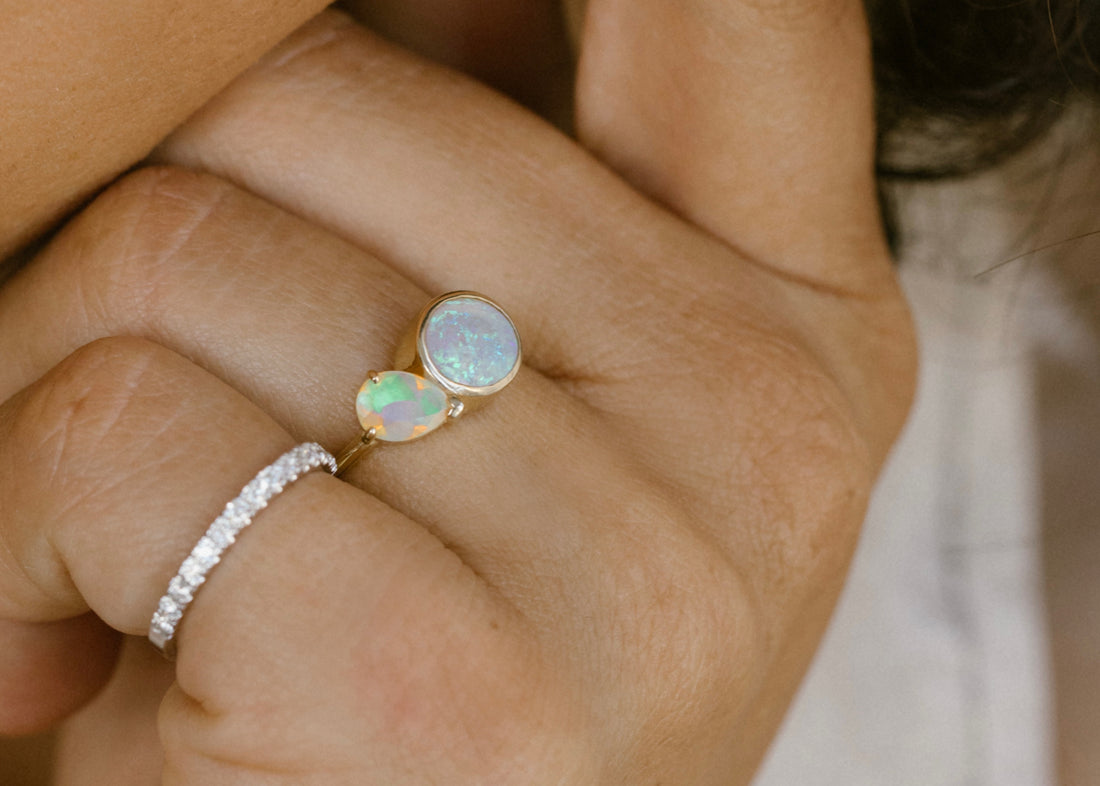
Kaleidoscope Dreams; The October Birthstone, Opal
Like many other month's, there are two birthstones associated with October- Opals and Tourmaline.
Opals have been mystifying us for centuries, as the multitude of colors they display truly sets them apart.

|
History
Opals have been treasured stones across many cultures throughout the years. Commonly known as the ‘Queen of Gemstones’, it was considered a symbol of hope and good fortune by the ancient Romans. The word "opal" can be traced back to the Sanskrit word upala, which means "jewel", the Latin word opalus, meaning "precious jewel", as well as the ancient Greek word opallios, meaning "to see a change in color".
Australia is famous for the production of high-quality White Opals and lesser known Black Opals. White Opals are also found in Ethiopia and Nevada, USA. A few thousand miles away from Nevada lies the country of Mexico, which is the only place where the stunning Fire Opal is found.
In the year 2008, NASA made a very interesting discovery. Opal deposits were found on the planet Mars!
Opal is one of the October birthstones, and is also given as a gift on a 14th wedding anniversary.

|
Composition
How does Opal form? Opals aren’t true minerals, but mineraloids, meaning that they lack a defined crystal structure. Opals form where rain and other water sources carry dissolved silica deep underground. When the water evaporates, remaining silica forms into opal.
Due to its high water content (as opposed to other gems like diamonds), opal is a soft, vulnerable stone that must be protected from extremes of temperature, chemicals, and daily wear and tear, all of which can cause damage, drying, and loss of color. Many jewelers must take great care when cutting and setting opal stones due to the fragility. While Opals are soft and fragile, they are suitable for gentle wear. Take care of your Opal jewelry by only wearing mindfully and gently. We recommend you take off your Opal jewelry when working out, gardening, cleaning, showering, or doing other activities where the stone could be hit or affected by chemicals.
Lore
It is believed to enhance the wearers sense of worth, self-esteem, and confidence. It brings out spontaneity and stimulate originality, creativity, and know one’s true self. As well, Opal is associated with love, passion, and desire.
In Arabic legend, it is believed that the opal fell to the earth from heaven, obtaining its colors from rainbows and flashes of lightning on the way down. The ancient Greeks believed opals gave their owners the gift of prophecy and guarded them from disease. Europeans have long considered the gem a symbol of hope, purity, and truth.
Opals were treasured and worn as a protective stone that warded off evil threats, thus being historically worn in crowns, shields, and necklaces as a protective talisman.

|
